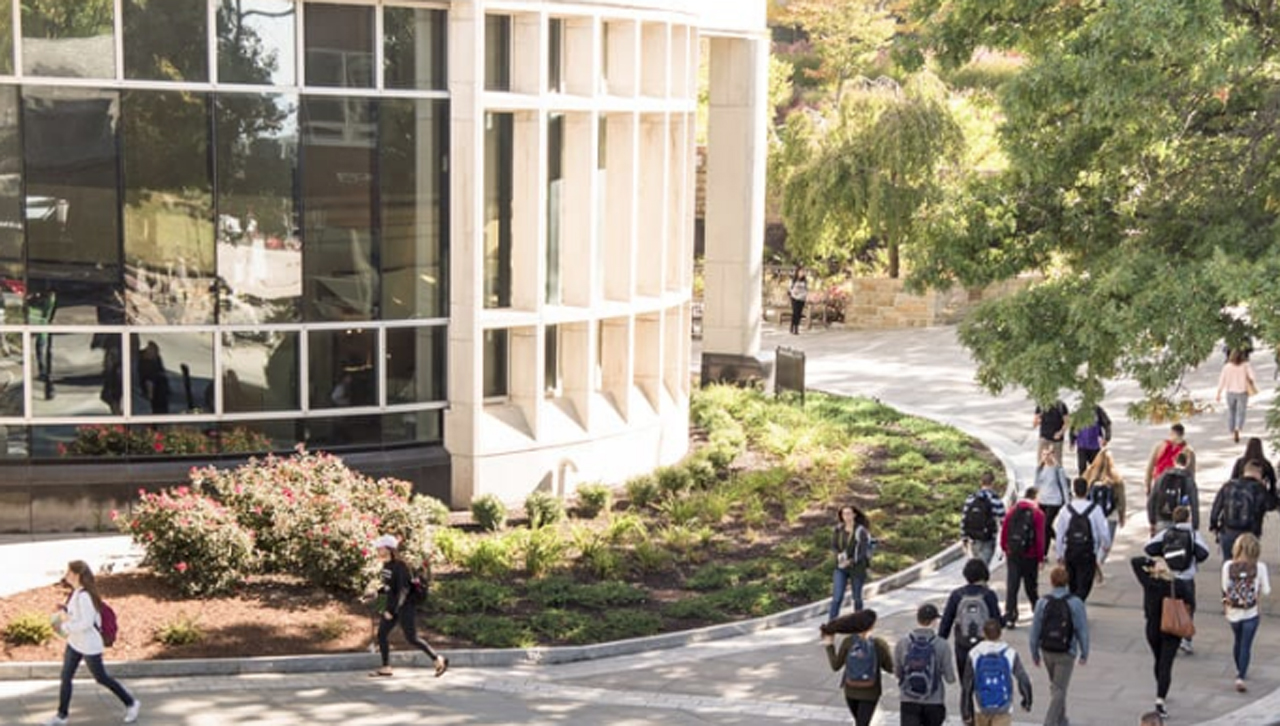Multifaceted Ranking Places Scranton Among Nation’s ‘Best College Values’

Survey finds money isn’t everything when it comes to a college education
About 90 percent of parents and students rated “preparing for a fulfilling career” as a very- or extremely-valuable benefit of a college education, according to a MONEY/Barnes and Noble college survey. MONEY magazine accounted for that statistic among the 27 factors evaluated for its 2017 ranking of the nation’s “Best Colleges For Your Money.” Scranton ranked No. 206 among the 711 U.S. colleges listed that MONEY determined to deliver the “best value.”
Scranton was among the 26 Jesuit universities, and was the highest ranked school in Northeastern Pennsylvania, in the list published online in July.
In addition to the widely-accepted measures used to assess “value,” such as graduation rates, affordability measures such as how much students and parents have to borrow, and measures of alumni success such as howmuch recent graduates earn, MONEY added a new factor to its ranking methodology this year – the percentage of a school’s graduates who consider themselves to be in “meaningful” jobs, as reported to PayScale.com.
MONEY’s ranking methodology also includes a “comparative value” score, which “assess howwell students at each school fare compared with those at other schools where the students who attend come from similar academic and economic backgrounds.” According to MONEY “by controlling for the types of students that colleges admit and seeing how well they do after graduation, the rankings judge how much of a contribution the college made to their success in the years in between.”
The methodology MONEY used to rank the colleges’ “academic quality” included the six-year graduation rate, the standardized test scores of incoming freshmen, the student-faculty ratio, among other factors.
The criteria used to assess “affordability” included an estimate of the “net price of a degree,” which assessed tuition, the time it takes for students to graduate, tuition inflation and the school’s average need, merit and athletic financial aid. The “affordability” criteria also looked at student debt, student loan default rates, student loan default rates adjusted for the economic and academic profile of a school’s student body and the affordability for low- and moderate- income students, among other factors.
The criteria MONEY used to assess “outcomes” included: salaries of alumni reported in PayScale early- and mid-career; their reported earnings at these points adjusted by major; and the “market value of alumni skills,” which is basedin the Brookings Institute’s calculation of the market value of skills commonly listed by alumni in their LinkedIn profiles. In addition to other factors, the “outcomes” criteria also looked at socio-economic mobility index that uses data from the Equality of Opportunity Project, a study that examines the percentage of students that move from low-income backgrounds to upper-middle-class jobs before the age of 34.
Colleges with graduation rates below the national median, that were in financial difficulty, or that had fewer than 500 undergraduates, were not included inMONEY’s ranking.
Scranton has been recognized for its value in other national rankings, which include U.S. News and World Report, Forbes, Niche.com and The Economist, among others.
About 90 percent of parents and students rated “preparing for a fulfilling career” as a very- or extremely-valuable benefit of a college education, according to a MONEY/Barnes and Noble college survey. MONEY magazine accounted for that statistic among the 27 factors evaluated for its 2017 ranking of the nation’s “Best Colleges For Your Money.” Scranton ranked No. 206 among the 711 U.S. colleges listed that MONEY determined to deliver the “best value.”
Scranton was among the 26 Jesuit universities, and was the highest ranked school in Northeastern Pennsylvania, in the list published online in July.
In addition to the widely-accepted measures used to assess “value,” such as graduation rates, affordability measures such as how much students and parents have to borrow, and measures of alumni success such as how
MONEY’s ranking methodology also includes a “comparative value” score, which “assess how
The methodology MONEY used to rank the colleges’ “academic quality” included the six-year graduation rate, the standardized test scores of incoming freshmen, the student-faculty ratio, among other factors.
The criteria used to assess “affordability” included an estimate of the “net price of a degree,” which assessed tuition, the time it takes for students to graduate, tuition inflation and the school’s average need, merit and athletic financial aid. The “affordability” criteria also looked at student debt, student loan default rates, student loan default rates adjusted for the economic and academic profile of a school’s student body and the affordability for low- and moderate- income students, among other factors.
The criteria MONEY used to assess “outcomes” included: salaries of alumni reported in PayScale early- and mid-career; their reported earnings at these points adjusted by major; and the “market value of alumni skills,” which is based
Colleges with graduation rates below the national median, that were in financial difficulty, or that had fewer than 500 undergraduates, were not included inMONEY’s ranking.
Scranton has been recognized for its value in other national rankings, which include U.S. News and World Report, Forbes, Niche.com and The Economist, among others.






